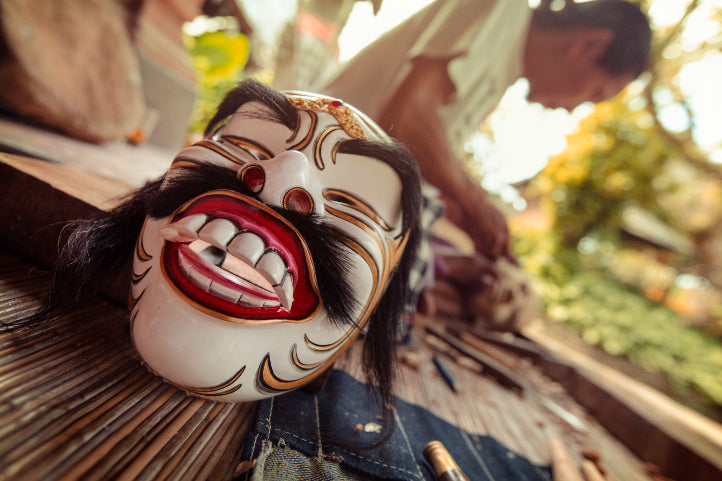Research for Sulawesi Adventure: the smart traveller’s playbook
Do the research and Sulawesi opens like a choose-your-own epic: misty Toraja highlands, dusk forests where tiny primates call from tree hollows, and reef walls that fall into blue infinity. Get the season, routing, and trip style right now, and this spoked-out island switches from “complicated” to “could be my best trip this year.”
Why it matters now
Sulawesi rewards planners, not sprinters. Big distances, variable seas, and living traditions mean your choices (month, direction, sleep style) dictate comfort and value. Lock the fundamentals and you’ll spend your energy on jungle dawns and reef days—not on missed ferries and soggy kit. If you want a ready-made arc that blends forest, coast and culture, start by skimming the outline on Sulawesi Adventure.
Seasons & seas (the research that pays you back)
April–November is generally calmer for sea days; December–March trends wetter—plan around that simple truth.
-
Dry-leaning window (Apr–Nov): steadier crossings, clearer water, happier snorkel/diving days.
-
Wetter months (Dec–Mar): heavier rain and choppier seas; land days still work if your rain kit isn’t pretend.
-
Shoulders: April/May and Sept/Oct balance conditions with fewer crowds.
If your calendar is fixed in the wet, bias the plan toward highlands and forests, and keep boat days flexible.
Carving the island into a doable trip
Pick one anchor region, add one contrasting chapter, and keep transfers sane.
-
North arc (Manado base): rainforest nights (e.g., Tangkoko) + reef days (Bunaken/Lembeh style).
-
South arc (Makassar base): Toraja culture, village walks, mountain air.
-
Central add-on (Togian vibe): slower boats, low-signal beaches, hammock energy.
Two focused zones in 10–14 days beat four rushed pins every time. For pacing ideas across active trips, have a wander through Trekking & Hiking Adventures.
Culture & etiquette that actually matters
Respect opens doors you didn’t know existed.
-
Toraja rites: dress modestly, observe first, accept invitations via your host/guide, and never treat ceremonies as a photo prop.
-
Forests: small quiet groups, no flash or playback, follow the guide’s lead, keep distance, leave zero trace.
-
Villages & markets: ask before photographing people; learn a greeting or two; carry your own refill bottle and skip single-use.
Researching route & direction (without overthinking it)
North-first vs south-first is a vibe call; your calendar decides the rest.
-
North-first: fly into Manado, stage a night, then alternate forest dusk walks with easy reef days; slot an extra night if you’re new to boat timing.
-
South-first: fly to Makassar, transfer to Toraja (allow a full travel day each way), then choose: deeper highlands, or fly north if time and budget allow.
-
Reality check: central hops (e.g., Togians) need weather + time + patience. If the schedule creaks, swap in an extra day around your anchor instead.
Ready-made flow that keeps things tidy? The day-by-day on Sulawesi Adventure shows a balanced arc without whiplash.
Picking sleep style: jungle-proximate vs easy-mode resets
Jungle lodges buy dawn proximity; comfort hotels buy hot showers and faster resets—both keep you in the story.
-
Forest-forward: arrive afternoon, stretch legs at dusk, pre-dawn start, nap midday, second light walk; lights on red mode, voices low.
-
Comfort-forward: base in Manado/Tomohon, day-trip the forest, rinse gear, early dinner—ideal if you’re stacking reef days.
Signal your preference early when shortlisting trips; it shapes transfer cadence and how many “soft” evenings you get.

Packing that works from jungle to reef (sea level to ~1,500 m)
Pack for heat, humidity and sudden downpours—then add one warm layer for upland evenings.
-
Layers: quick-dry shirts; long-sleeve sun/bug top; light fleece for highlands nights.
-
Rain kit: proper waterproof jacket and pack cover; small dry bags; sandals that don’t die in the rain.
-
Footwear: breathable hikers or trail shoes; reef-safe booties if lots of shore entries.
-
Forest kit: headlamp with red mode, light gloves, compact binoculars, insect protection.
-
Temple/ceremony kit: modest top plus long skirt/trousers; shawl/scarf.
-
Power/comms: power bank; local SIM if you want coverage beyond towns.
-
Waste-lite habits: refill bottle, fold-flat tote, leave nothing behind.
Health & impact (plain-spoken, not preachy)
Tropics 101: manage heat, sun, hydration and insects. Indonesia has malaria and dengue risk in some areas—seek personalised medical advice well before travel and use prevention basics (repellent, long sleeves, coils/nets where advised). On impact, the winning moves are simple: stick to paths in fragile zones, keep groups small and quiet, and support local guides and hosts.
Counterpoints & pitfalls
Myth: “It’s all beaches and easy boats.”
Reality: weather and distance rule. Build buffers around any sea day and don’t stitch north, central and south into one short week.
Myth: “You’ll definitely see X animal.”
Reality: forests don’t do guarantees. Good guides, right hours, and patient groups improve odds—promise nothing, enjoy everything.
Pitfalls to dodge:
-
Underestimating transfers (especially Makassar ↔ Toraja and island hops).
-
Wrong kit for the month (monsoon means real rain gear, not wishful thinking).
-
Etiquette gaps (especially at Toraja rites and in small communities).
Mini playbook: plan your Sulawesi arc in 8 steps
Front-load the research—future-you will high-five present-you.
-
Pick your weather window (Apr–Nov for steadier sea days; Dec–Mar wetter).
-
Choose your anchor (North for forest + reef; South for Toraja culture).
-
Add one contrast (another coast, or a highlands block; resist three).
-
Set your pace (two bases > four; fewer moves, deeper days).
-
Book guided forest time (ethical, low-impact, and you’ll notice more).
-
Lock in buffers around long transfers and boat days.
-
Pack for range (humid heat + real rain + warm layer for uplands).
-
Shortlist an itinerary that matches your style: start with Sulawesi Adventure, then browse ideas in Asian Adventures.
Where to browse next (useful, not spammy)
-
Compare pacing and styles inside Trekking & Hiking Adventures.
-
Ready to scan everything at once? Try Search All Tours.
FAQs
What’s a realistic length if I want both rainforest and reef?
Ten to fourteen days. Stage around Manado for forest + reef, or pair Toraja with a short reef stint if flights line up.
Is the Togian hop worth it?
If you want unplugged days and slower water time, yes—just allow extra transfer hours and keep plans flexible around weather.
Do I need a guide in the forest?
Strongly recommended. You’ll see and understand more, and it supports conservation-positive livelihoods.
Are Toraja ceremonies open to visitors?
Sometimes—via introductions and with respectful behaviour. Dress modestly, follow your host’s lead, and let the moment be the moment.
When’s best for visibility and calmer seas?
Generally better from about April to November; December to March can be wetter and rougher.
TL;DR
-
Research the season first: April–November steadier for sea days; December–March wetter but workable with the right mindset.
-
Pick one anchor (north or south) and add one contrast—don’t try to cross the whole island in a week.
-
Forest etiquette and Toraja respect matter more than any lens you carry.
-
Pack for humid heat + real rain, with a warm layer for highland nights.
-
Guided days in forests and villages do the heavy lifting—and keep impact low.
Key Takeaways
-
Plan by region and season, not just dates.
-
Two bases beat four: fewer transfers, deeper experiences.
-
Respect first: in forests and at ceremonies, your behaviour is the story.
Conclusion
Do the research now and Sulawesi will meet you halfway. Choose your window, pick your anchor, and decide how jungle-heavy or sea-soaked you want your days. Then lock it in and let the island do its work. Start with the outlines and dates on Sulawesi Adventure, or browse ideas in Asian Adventures.





